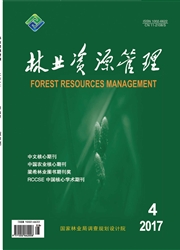

 中文摘要:
中文摘要:
自然资源和它们提供的生态系统服务功能是旅游产业可持续发展的基础。基于3S技术和生态功能区划理论,对我国第一大淡水湖鄱阳湖湿地的生态旅游功能进行评价。结果表明:鄱阳湖湿地具有较好的旅游资源,旅游开发潜力较大。由于湿地地理空间的差异性和自然生态系统的多样性,鄱阳湖湿地生态旅游功能在地理空间上也呈现不同的适宜性。生态旅游功能最适宜区域是进贤县、鄱阳县和星子县,面积约1 300km2,占鄱阳湖总面积的三分之一。通过SWOT分析表明,3个县在发展湿地生态旅游产业的过程中,各自存在一定的优势和挑战,这需要通过科学规划和产业结构优化进行完善,从而实现湿地生态旅游产业的可持续发展。
 英文摘要:
英文摘要:
The natural resources and the ecosystem service functions are the basis for sustainable development of tourism. However,the tourism may probably destroy them if the natural resources are not well preserved. Consequently,it is very necessary to appraise the importance for tourism development. The paper takes Poyang wetlands,the largest freshwater lake in China as a sample based on the 3S and the theory of ecological function zoning. The result shows that there are plenty of resources for tourism development in Poyang wetlands. Because of the dissimilarity of geographical space and the diversity of natural ecosystem,there is a different suitability for ecological tourism in different areas in Poyang wetlands. The most suitable area for tourism is located in the Jinxian county,Poyang county and Xingzi county,and the total area is about 1 300km2,almost one third of the area in Poyang wetlands. The three counties have their own individual advantages and challenges in tourism development. Jinxian county is located in Nanchang city,the capital of Jiangxi Province,its geographical location is good for developing tourism. Poyang county has plenty of tourism resources and the national wetland park in it has developed for a long time,and Xingzi county is near Lushan with well-known tourism landscape in China. Therefore,it is necessary to make scientific planning and optimize the industry contents for sustainable tourism development.
 同期刊论文项目
同期刊论文项目
 同项目期刊论文
同项目期刊论文
 期刊信息
期刊信息
